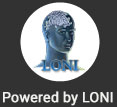This systematized approach will allow researchers to look more closely at the biomarkers of neurodevelopmental and behavioral effects of substance use (SU) in images, neuropsychological data, demographics, and phenomic variables.
Previous success in multi-center projects demonstrates that I2C has experience in enacting a centralized approach that reduces the errors associated with varying performance in data generation and collection that are known to impede discovery. I2C will foster this same success for the study of neurodevelopmental and behavioral effects of SU.
Organization

Together with its partners, I2C will standardize acquisition and analysis procedures across sites, store and harmonize the data acquired, and create bioinformatics tools that the scientific community can use to extract knowledge from the database.
To achieve these end goals, separate work groups have been identified and defined:Each workgroup will coordinate and work seamlessly with their colleagues and counterparts in the ABCD consortium.
Consortium
The ABCD consortium is made up of nine different research sites. The I2C workgroup will coordinate the combining of data and the analysis of results across and within PRISM research components. I2C will also leverage the team's prior experience with the NDAR database to share results and foster further discovery within the research community.

Imaging Workgroup
The imaging workgroup will work with the Coordinating Center (CC) to ensure that the processes and procedures put in place for neuroimaging data acquisition and analysis are followed and maintained.
This workgroup will have a protocol harmonization team and an analysis team. They will develop, implement and maintain state-of-the-art MR protocols required by participating sites as well as optional sequences that may be site specific. This level of detail will yield standard pipelines to analyze all data gathered by the consortium.

The analysis team will conduct large scale investigations of the pooled data to efficiently test broad hypotheses and provide guidance to individual users about best practices.
Informatics Workgroup
The informatics workgroup will work with the Coordinating Center and the imaging workgroup in tandem to combine data and results across modalities while developing and distributing bioinformatics tools.Heading this group is USC's Laboratory of Neuro Imaging (LONI), a leader in neuroimaging research and provider of research community-centric resources for over twenty years.
Having contributed to many multisite studies, LONI maintains a robust infrastructure to ensure the preservation of data integrity. With data from more than 48,000 subjects and over 7 million data downloads to investigators around the world, LONI is a strong asset for the PRISM initiative as a data repository that offers storage, physical downloads and supercomputing technology for data analysis.


